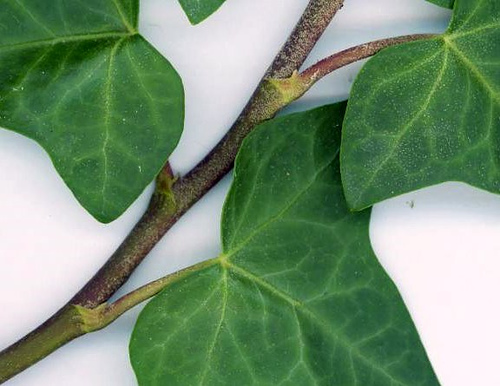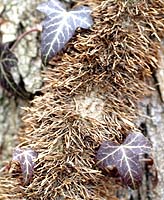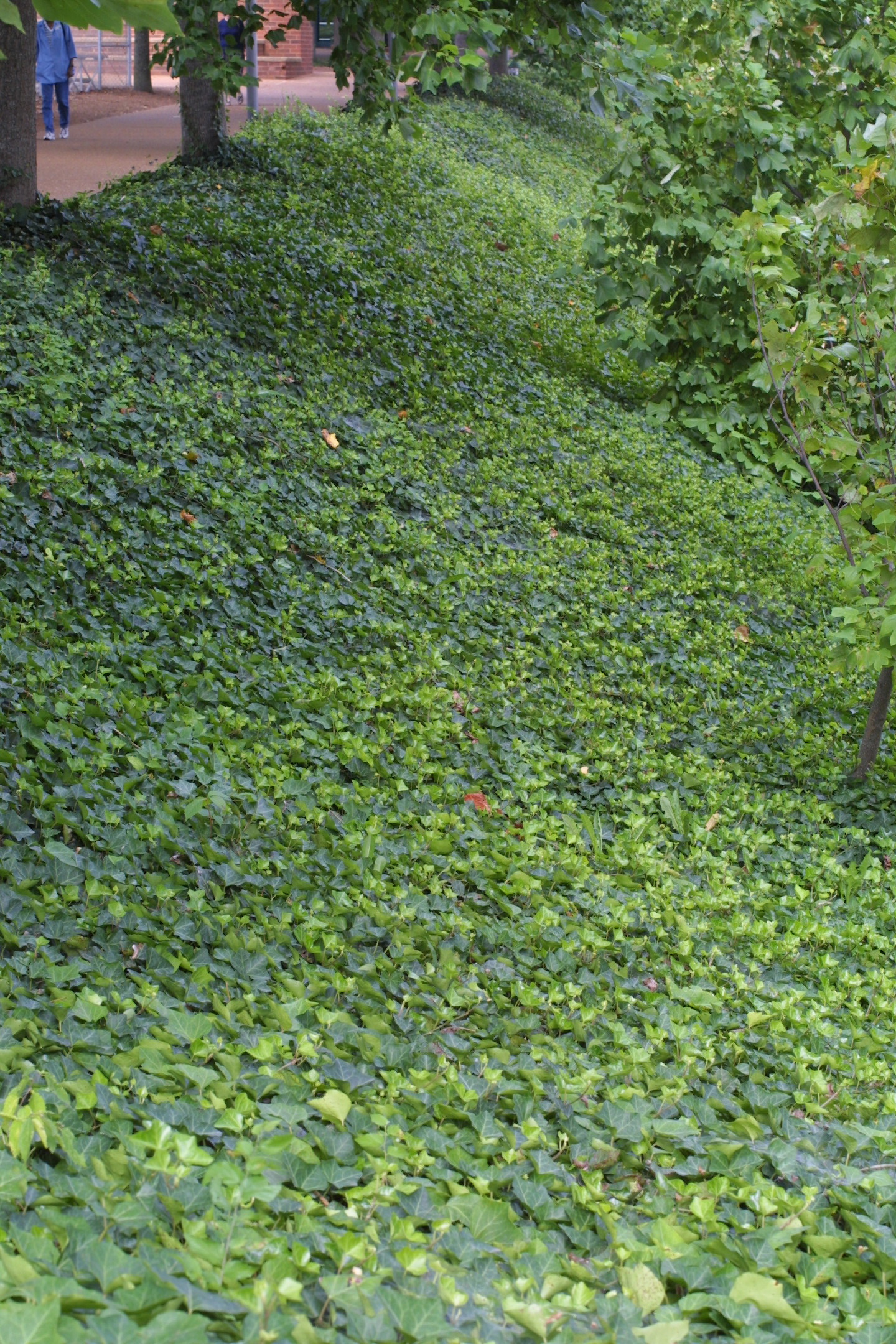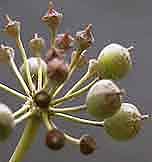

 Interactions
Interactions
English Ivy's main interaction with other plants is the tree.
With no preference to what kind of tree it is, the ivy will
climb to the top in order to be close to the sunlight.
After intense growth, the ivy eventually reaches a
point where it blocks the tree's light completely. The
tree is then weakened, and there is a tendency for trees in this
physical state to easily blow down during times of high
precipitation and wind s. Hedera
helix has the
same effect on plants that it covers when it spreads across the
ground. Most of the time, plants present on the ground are
eliminated, including a variety of flowers and grasses.
s. Hedera
helix has the
same effect on plants that it covers when it spreads across the
ground. Most of the time, plants present on the ground are
eliminated, including a variety of flowers and grasses.
There are a few insects and
fungi that interact with the ivy
as well. Some English Ivy houses
the Bacterial Leaf Scorch, which is a plant pathogen that is
destructive to trees. The most commonly effected trees are
Oaks, Maples, and Elms. Although few pests or diseases
affect the ivy, there are some sap sucking scale insects that
feed on the waxy surface of the leaves and the adhering
substance inside the stem, causing the destruction of the plant.
Leaves of the ivy are sometimes infected with fungal diseases
that cause spots to develop on the leaves before they turn yellow
and f
trees. The most commonly effected trees are
Oaks, Maples, and Elms. Although few pests or diseases
affect the ivy, there are some sap sucking scale insects that
feed on the waxy surface of the leaves and the adhering
substance inside the stem, causing the destruction of the plant.
Leaves of the ivy are sometimes infected with fungal diseases
that cause spots to develop on the leaves before they turn yellow
and f all off. Because the ivy can quickly
regenerate the
damaged leaves, however, this fungus is not a large threat.
all off. Because the ivy can quickly
regenerate the
damaged leaves, however, this fungus is not a large threat.

Humans have a large interaction with English Ivy. Many times humans plant the ivy in areas where it is difficult to grow grass because the ivy can tolerate a larger variety of soils and it is very low maintenance. In places where English Ivy is grown, erosion is less common, so people often plant the ivy on hills and in areas that are more susceptible to land slides. Decoration is a common use for the ivy. It is often hung on doors or patios after it has been woven through wire grids with moss and sometimes flowers. Hedera helix is also present in some medications that are used to treat diseases such as gout, whooping cough, and bronchitis. Melting the twigs in hot oil is also know to be a soothing mechanism for sunburn.

Hedera helix a lso affects other mammals and birds.
Leaves of the plant are very
poisonous and causes toxicosis if ingested. Symptoms
include upset stomach, diarrhea, hyperactivity, breathing
difficulty, coma, fever, muscular weakness, and lack of
coordination. Without birds, English Ivy would not be able
to complete its life cycle
because seeds would not be transferred to different areas.
The seeds also affect birds if too many are ingested because the
berries are poisonous, as well.
lso affects other mammals and birds.
Leaves of the plant are very
poisonous and causes toxicosis if ingested. Symptoms
include upset stomach, diarrhea, hyperactivity, breathing
difficulty, coma, fever, muscular weakness, and lack of
coordination. Without birds, English Ivy would not be able
to complete its life cycle
because seeds would not be transferred to different areas.
The seeds also affect birds if too many are ingested because the
berries are poisonous, as well.